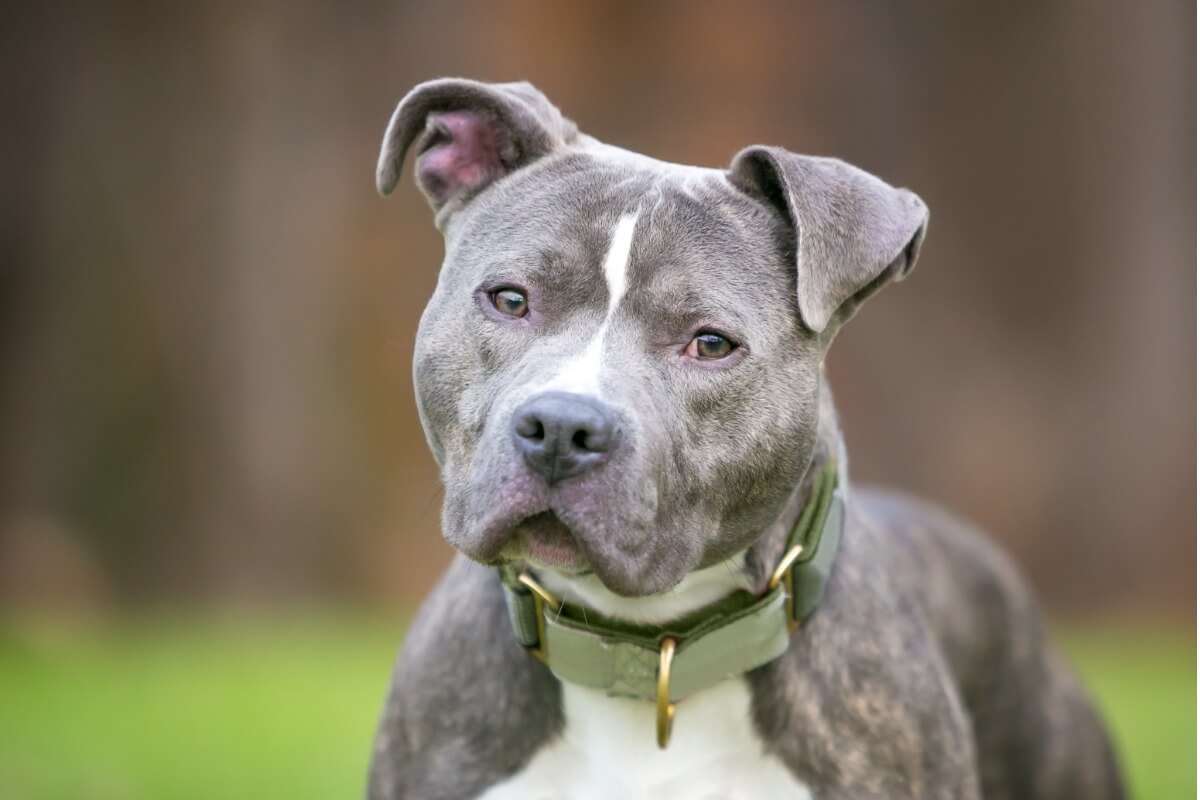Facts about Blue Nose and Red Nose Pitbulls

Pitbulls are one of the best-known dog breeds, but did you know that they’re sometimes classified by the color of their nose? Although this isn’t an official classification, among those who are most fond of these dogs, blue and red nose pitbulls are highlighted.
In this article, you’ll learn more about these dogs, as well as delving into the question of colored noses. Don’t miss it, because pitbulls are one of the most misunderstood breeds, and so it’s important to understand them better.
Pitbull breed history
The term “pitbull” is used to designate a group of formal breeds: the American pitbull terrier, the American Staffordshire terrier and the Staffordshire bull terrier. It’s similar to when we talk about mastiffs, where we have the Spanish mastiff, the Pyrenean mastiff, and the Italian mastiff, among others.
The original breed of almost all those belonging to the pitbull group is the American pitbull terrier. These dogs were created to fight in pits in the middle of the 19th century, hence their powerful bite and strong musculature in the neck, forelimbs and chest.
It is a breed with large withers on its back. Although it’s true that due to their strength they can be dangerous, they’re sociable, playful and affectionate animals, and they only need the same as other dogs: a proper training and socialization process.
What are blue nose pitbulls?

Back to the subject at hand, it’s time to talk about the blue nose pitbull. Surely it isn’t the first time you’ve heard about this color when it comes to breeds, as it’s often used to talk about the color of the coat. It isn’t blue as such, but a dilution of black that results in a dark coat with bluish highlights.
Well, the same thing happens with a pitbull’s nose. Those with black noses are likely to inherit the gene responsible for this color. The blue nose pitbull is one that has a black nose that has slightly lightened towards navy blue.
Although they’re often sold as exceptional dogs, the truth is that they aren’t so unusual. Generally, this is a strategy of breeders to help them sell more. In fact, blue variations in coat and nose are often discouraged, as they’re more prone to develop skin problems.
Characteristics of red nose pitbulls
Like the blue kind, the red nose pitbulls aren’t an exceptional variation of this breed, but simply an additional coloration that, in this case, affects the nose. It’s thought that this genetic variation may have originated in Ireland from intensive, inbred breeding for pit fighting, which also resulted in reddish coats, nails, lips, and eyes.
There’s also a myth that red nose pitbulls are descended from the Old Family Red Nose lineage of Ireland. However, this is another ploy to drive up the price of the dogs.
These hoaxes are aimed at people looking to buy a dog for its aesthetic characteristics.
The dangers of buying rather than adopting
The case of blue and red nose pitbulls is an example of how the pet trade harms both the animal and the would-be owner. It isn’t only the fact that these two pigmentations aren’t as exceptional as people would have us believe (and aren’t a separate breed within the pitbulls), but the breeding of animals for sale involves a series of conditions that greatly deteriorate the animal’s health.
It’s very rare to find a breeder who puts the health of the dogs ahead of aesthetics, as well as employing quality care and respect for the individuals.

Purebred pitbulls are often prone to hip dysplasia, allergies and heart disease such as arrhythmias. This doesn’t mean that they’ll necessarily develop them, but they have a higher risk of it and should be monitored.
This is why many people insist that it’s better to adopt a dog rather than buy one. Not only because of the moral connotations, but also because it’s one of the ways to combat the aesthetic trends that affect these dogs and deteriorate their health.
Remember that your pit bull, no matter what color its nose is, will continue to be a sentient being that needs your love, care, and responsibility. They’ll always be beautiful in the eyes of those who look after them well.
All cited sources were thoroughly reviewed by our team to ensure their quality, reliability, currency, and validity. The bibliography of this article was considered reliable and of academic or scientific accuracy.
- AMERICAN STAFFORDSHIRE TERRIER. (s. f.). FCI. Recuperado 26 de agosto de 2022, de https://www.fci.be/es/nomenclature/AMERICAN-STAFFORDSHIRE-TERRIER-286.html
- Pitbulls: Everything You Need to Know. (s. f.). Best Friends Animal Society. Recuperado 26 de agosto de 2022, de https://resources.bestfriends.org/article/pitbulls-everything-you-need-know
This text is provided for informational purposes only and does not replace consultation with a professional. If in doubt, consult your specialist.